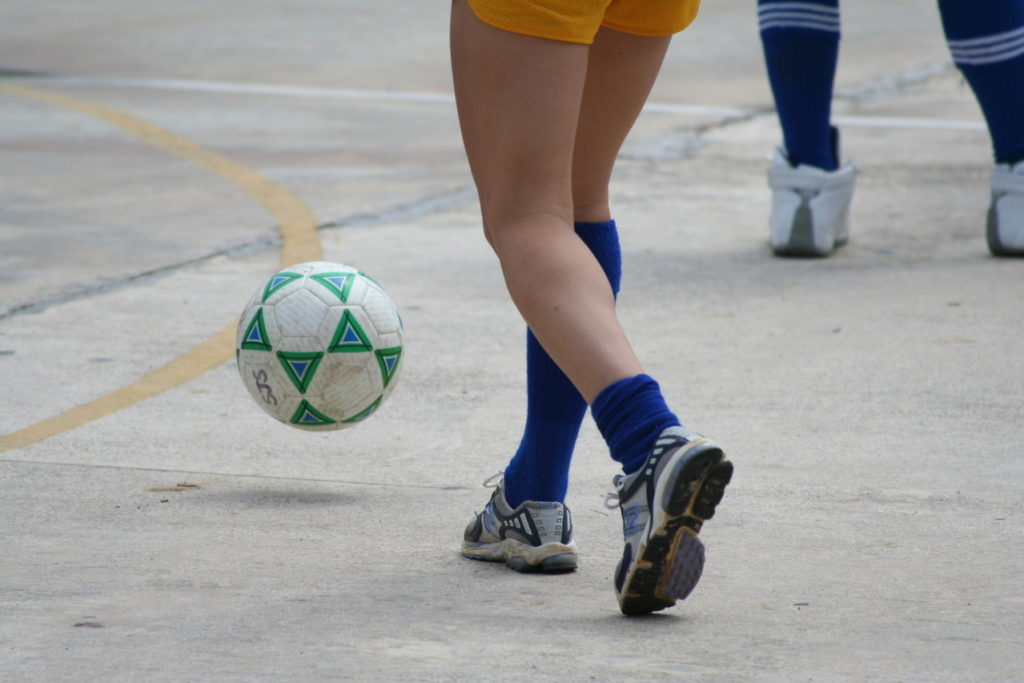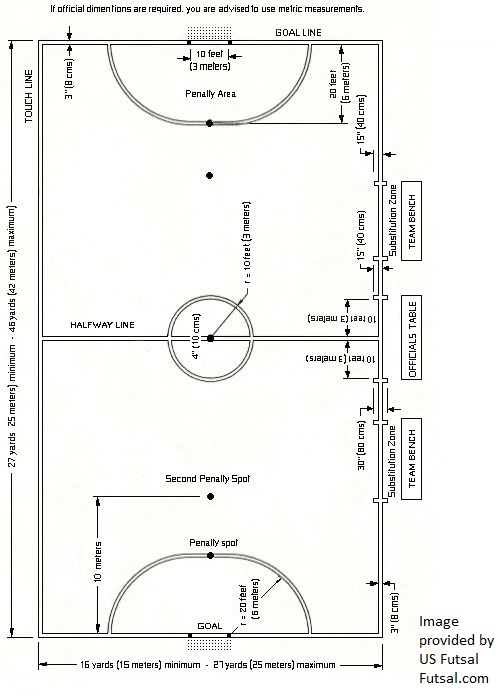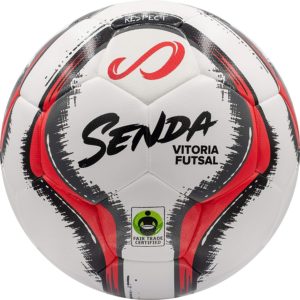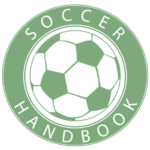What is Futsal?
Futsal is soccer’s younger cousin. Some believe that its invention came from the love of short-sided or pickup soccer.
It is played with five players per team, on a hard surface and the duration of the game is only 40 minutes. The Futsal ball is smaller than a traditional soccer ball and players wear indoor shoes or flats.
Futsal is a fast-paced version of the beautiful game that allows players to get many touches on the ball. Plus, physical contact is discouraged which makes it a great sport for kids as well as adults.
The History of Futsal
Soccer is called football in most of the world. It is believed this is where the name “Futsal” stems from. The game of futsal was invented in Montevideo, Uruguay in 1930. Football (Soccer) was already the top sport in the country, but after Uruguay won gold medals in the 1924 and 1928 Summer Olympics and the World Cup in 1930 it saw a jump in popularity.
A teacher, Juan Carlos Ceriani, developed the new game as a recreational indoor soccer (or indoor football) game to play in gyms or basketball courts in YMCAs. His goal was to create a game similar to soccer that could be played indoors or outdoor, but also could be played with fewer participants.
Ceriani didn’t want to create a football clone, but something new. So he incorporated many aspects and rules from different games.
- Soccer – players can use all parts of the body except the hands and arms.
- Water polo – Goalkeeper rules
- Basketball – The number of players (5) on the Futsal field and the length of the game: 40 Minutes.
- Handball – The goal and field sizes.
The YMCA network spread the game throughout South America and it became a hit. Players loved it because it was easy to play and could be played year-round.
Today it is the only form of indoor soccer officially endorsed by FIFA (Fédération Internationale de Football Association or in English: International Federation of Association Football)
The Benefits of Playing Futsal
Futsal offers many benefits for soccer players. The game is very economical, simple, and fun. It harkens back to streetball where soccer players used their quickness and skills in small spaces. There are many benefits of playing Futsal that help soccer development.
- It is played with fewer players on the field, so each player has more chances to touch the ball. This accelerates the learning process.
- Futsal develops many of the skills required for soccer: agility and coordination, ball skills and mastery, accurate passing and receiving of the ball, field awareness, and more.
- Playing in smaller tight spaces demands the development of quick reflexes, fast thinking, ball control, and pinpoint passes.
- Slide tackles and excessive physical contact is forbidden which results in few injuries.
- The fast pace is great for improving fitness.
- It’s action-packed with more goals than traditional soccer.
- Most of all it is fun to play!

Futsal Rules
Although the game quickly gained popularity the rules of Futsal were not uniform and it wasn’t until 1956 that Luiz de Oliveira of São Paulo wrote the Book of Rules of Futsal. The rules were then adopted on an international level. Today the official rules of Futsal are governed by FIFA.
Gameplay is meant to promote soccer skills and not physical play. Compared to traditional soccer, less physical contact is tolerated. This gives Futsal players more freedom to show off their skills.
Basic Rules
- Futsal is played with a heavier and smaller ball that bounces less than a conventional soccer ball.
- Played indoors but played with played with touchlines instead of walls.
- Played on a hard surface, no grass or turf.
- Matches are officiated by two referees, one on each touchline.
- There are no throw-ins. Play resumes with a kick-in.
- There are no offsides.
- The goalkeeper must wear a different color jersey than the rest of the team.
Number of Players in Futsal
- Teams include a maximum of 5 players – Four outfield players and one goalkeeper.
- Teams must have a minimum of 3 players to play a game.
- In official matches, 9 substitutions are allowed.
- Rolling substitutions can be made at any time except during time-outs.
Game Play and Length
- This is very different than soccer.
- Games last 40 minutes with two 20 minute halves.
- No injury time, or stoppage time.
- The clock stops when the ball leaves the playing field or a foul is called.
- The clock starts again when play resumes.
Time-outs
- Teams may call one one-minute timeout per half (when in possession of the ball).
- Time-outs don’t carry over.
- No time-outs if the game goes into extra time.
Fouls and Penalties
- Just like in soccer / football, fouls are punished with either an indirect or direct free-kick.
- Penalty kicks result from a foul inside the penalty box.
- If a player receives a red card, they can only be replaced after a mandatory two-minute time penalty.
- During penalty time the team must play with one less player.
- If the team concedes a goal during this time, the substitute may come on immediately following the goal.
Team Fouls
- This is very different than traditional soccer.
- A record is kept for the number of fouls committed by a team, called “accumulated fouls.”
- When a team accumulates 6 fouls the opposing team receives a free-kick at the second penalty shot (Ten meters from the goal) without a wall.
- If the sixth foul is committed between the goal and the second penalty spot, the free kick is taken where the foul occurred.
For more details and the official rules read the Futsal, Laws of the Game from FIFA.
Futsal Court Dimensions

Court Size For Non-international Matches
- Length (touchline): minimum 25 m / maximum 42 m
- Width (goal line): minimum 15 m / maximum 25 m
International Games Field Size
- Length (touchline): minimum 38 m / maximum 42 m
- Width (goal line): minimum 18 m / maximum 22 m
Goal Dimensions
- Futsal goals must be placed in the middle of each end line.
- Width: 3 meters wide.
- Height: 2 meters tall.
- Goal depth: 10 cm at the top and 100 cm at the bottom.
Other Futsal Dimensions
- Penalty area – Quarter-circles, with a 6 m radius, are drawn centered on the outside of each goal post. The quarter-circles are joined in front of the goal to create the penalty area.
- There is a penalty spot is located 6 meters from the midpoint of the goal.
- A second penalty spot is located 10 meters from the center of the goal.
- The center spot is at the center of the midfield line.
- The center circle has a 3-meter diameter and has the center spot at its center.
- Corner arcs are 25 cm from each corner.
The Futsal Ball

- Size: Circumference of between 62cm and 64cm.
- Weight: Between 400g and 440g
- Ball pressure: A pressure equal to 0.6–0.9atm (600–900g/cm2 ) at sea level.
- The ball must bounce between 50cm and 65cm on the first rebound when dropped from 2 meters.




